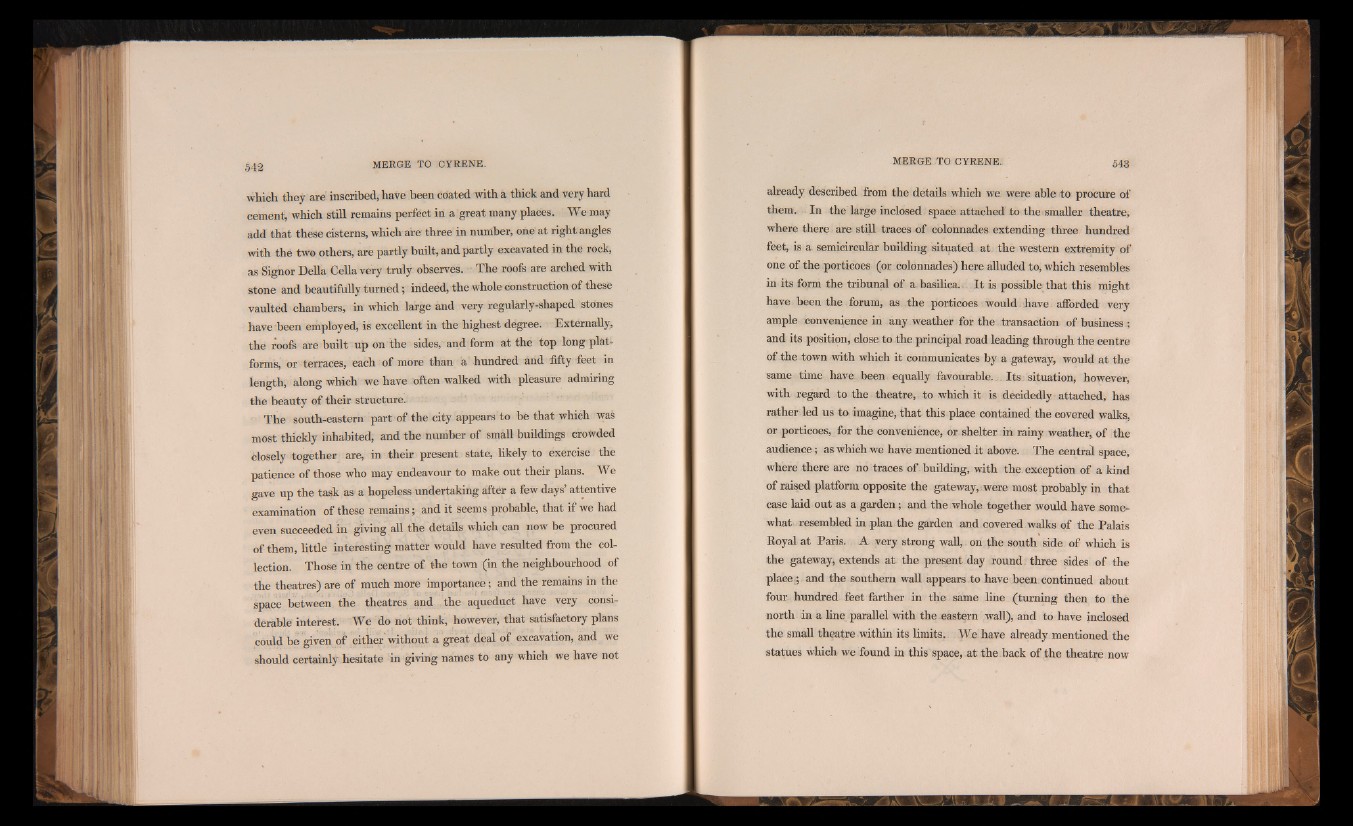
542
which they are inscribed, have been coated with a thick and very hard
cement, which still remains perfect in a great many places. We may
add that these cisterns, which are three in number, one at right angles
with thé two others, are partly built, and partly excavated in the rock,
as Signor Della Celia very truly observes. The roofs are arched with
stone and beautifully turned ; indeed, the whole construction of these
vaultéd chambers, in which large and very regularly-shaped stones
have been employed, is excellent in the highest degree. Externally,
the roofs are built up on the sides, and form at thé top long platforms,
or terraces, each of more than a hundred and 'fifty "feet in
length, along which we have often walked with pleasure admiring
the beauty of their structure.
The south-eastern part of the city appears to be that which waè
most thickly inhabited, and the number of small buddings erowded
closely together are, in their present state, likely to exercise the
patience of those who may endeavour to make out their plans. We
gave up the task as a hopeless undertaking aftér a few days’ attentive
examination of these remains ; and it seems probable, that if we had
even succeeded in giving all the details which can now be procured
of them, little interesting matter would have resulted from the collection.
Those in the centre of the town (in the neighbourhood of
the theatres) are of much more importance ; and the remains in the
space between the theatres and the aqueduct have very considerable
interest. We do not think, however, that satisfactory plans
could be given of either without a great deal of excavation, and we
should certainly hesitate in giving names to any which we have not
already described from the detads which we were able to procure of
them. In the large inclosed space attached to the smaller theatre,
where there are stid traces of colonnades extending three hundred
feet, is a semicircular budding situated at the western extremity of
one of the porticoes (or colonnades) here aduded to, which resembles
in its form the tribunal of a basilica. . I t is possible_that this might
have been the forum, as the porticoes would , have afforded very
ample convenience in any weather for the transaction of business .;
and its position, close to the principal road leading through the centre
of the town with which it communicates by a gateway, would at the
same time have been equally favourable... Its: situation, however,
with regard to the theatre, to which it is decidedly attached, has
rather led us to imagine, that this place contained the covered walks,
or porticoes, for the convenience, or shelter in rainy weather, of the
audience ; as which we have mentioned it above. The central space,
where there are no traces of building, with the exception of a kind
of raised platform opposite the gateway, were most probably in that
case laid out as a garden ; and the whole together would have somewhat
resembled in plan the garden and covered , walks of the Palais
Royal at Paris. A very strong wall, , on the south side of which is
the gateway, extends at the present day round three sides of the
plaee:; and the southern wall appears to have been continued about
four hundred feet farther in the same line (turning then to the
north in a line parallel with the eastern wall), and to have inclosed
the small theatre within its limits. We haye already mentioned the
statues which we found in this space, at the back of the theatre now